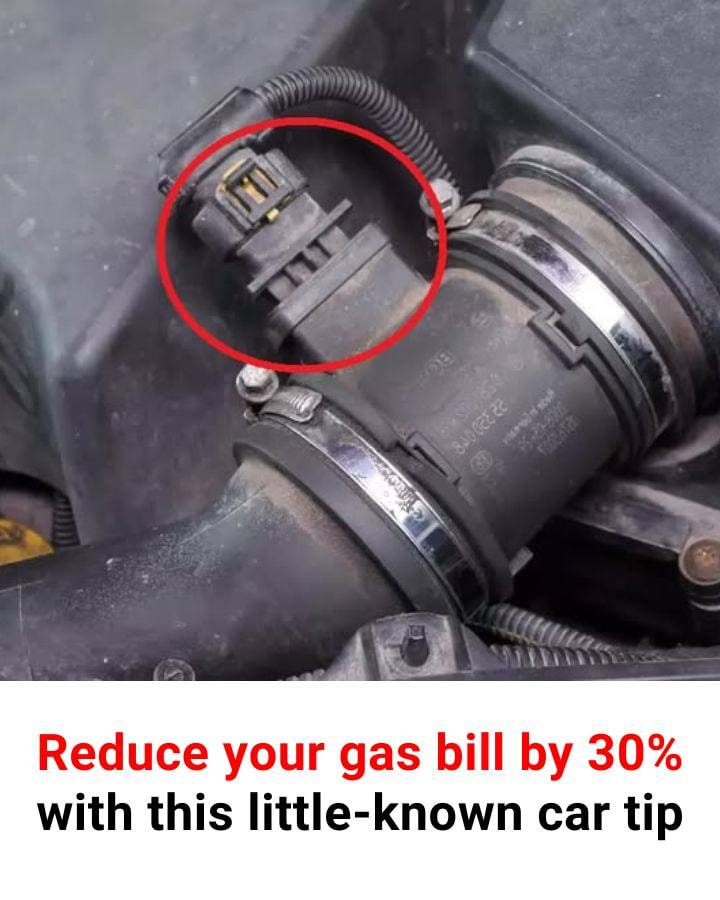If you’ve felt the sting of rising gas prices every time you fill up, you’re not imagining things—fuel costs have quietly become one of the biggest money drains for everyday drivers. But what if you could flip the script with one simple, often-forgotten fix? We’re talking about a small part under your hood that could be quietly sabotaging your fuel economy. The hero of the story? The mass air flow (MAF) sensor.

What Exactly Is a MAF Sensor and Why Should You Care?
Let’s keep it simple. The MAF sensor measures how much air is entering your car’s engine and tells the computer how much fuel to mix in. Think of it as your engine’s breathing monitor. When it’s working perfectly, your fuel-to-air ratio is balanced. When it’s off—like when it’s dirty or damaged—your engine starts overcompensating, usually by burning more fuel than it needs to.
Imagine trying to cook dinner without knowing how many guests are coming. You either make too little or way too much. That’s exactly what happens inside your engine when the MAF sensor sends bad data.
Video: 5 SIMPLE tips to maximize fuel economy
How a Dirty MAF Sensor Wastes Fuel (and Your Money)
Over time, the MAF sensor gets clogged with dust, debris, and oily residue from the intake system. When that happens, it can’t read airflow accurately anymore. The engine’s computer miscalculates, ends up injecting more fuel than necessary, and suddenly your once-efficient car becomes a gas-guzzler.
You won’t always get a dashboard warning. Instead, you’ll just notice:
- Poor fuel economy
- Sluggish acceleration
- Random engine misfires
- Black smoke from the exhaust
- Rough idling that feels like your car’s struggling to breathe
If that sounds familiar, your MAF sensor might be crying for attention.
Real People, Real Results: The Savings Are Real

Don’t just take our word for it. One Toyota Corolla owner cleaned their MAF sensor and saw their mileage jump from 12L/100km to just 8.5L—a whopping 30% improvement. A Ford Focus driver replaced theirs and gained 22% efficiency. Even a simple cleaning on a Honda Civic boosted fuel performance by 15%.
When you multiply those gains across a year of driving, it can easily translate into $200–$400 in savings. And that’s with a fix that takes less than 15 minutes and costs under $10 in cleaner—or around $100 if you need a full replacement.
How to Clean or Replace Your MAF Sensor Like a Pro
Think this sounds too technical? It’s not. Here’s how you can do it yourself with zero mechanic experience:
- Buy the right cleaner – Use a MAF sensor-specific spray. Don’t substitute with brake or carburetor cleaners.
- Locate the sensor – It’s usually near the air filter box, attached to the intake hose.
- Remove and unplug it – Carefully disconnect the wires and unscrew the sensor.
- Spray gently – Coat the sensor’s wires or film with 5–10 bursts of spray. Don’t scrub it—just let the cleaner do the work.
- Let it dry – Wait at least 10 minutes before reinstalling. Moisture and electronics don’t mix.
If your sensor still throws errors or your car runs poorly afterward, replacing it is still cheaper than living with terrible mileage.
Fueling Mistakes That Quietly Drain Your Wallet
Video: How to Save Fuel: Air filter & mass airflow sensor
Fixing your MAF sensor is a great start—but don’t stop there. Everyday gas station habits can quietly chip away at your budget. Let’s bust a few myths and drop some money-saving truth bombs:
- Topping off after the pump clicks? Stop. It can flood the vapor recovery system and lead to gas waste.
- Filling up on weekends? Bad timing. Gas prices tend to peak Friday through Sunday. Try Monday or Tuesday instead.
- Skipping price-checking apps? You could be missing cheaper stations just blocks away.
- Avoiding loyalty programs? You’re leaving easy savings on the table. Most gas brands give discounts or cashback for free.
- Letting the tank run near empty? That strains your fuel pump, which isn’t cheap to replace.
- Using premium gas unnecessarily? If your car doesn’t require it, skip it. Regular gas works fine for most vehicles.
- Ignoring tire pressure? Underinflated tires increase drag and destroy fuel efficiency. Check monthly.
- Not using rewards credit cards? Some cards give up to 5% back on fuel. That adds up fast.
Make Efficiency a Lifestyle, Not a Chore
Here’s the deal: gas savings aren’t just about finding the cheapest station anymore. It’s about combining smart car maintenance with savvy driving and fueling habits. That’s how you get ahead of rising prices.
Start with the MAF sensor—it’s a no-brainer. Then build on that momentum with smarter refueling habits, and you’ll turn your car into a lean, fuel-saving machine.
Conclusion: One Tiny Sensor, Big-Time Savings

Let’s recap what you’ve just learned: the MAF sensor may be small, but when it’s clogged or damaged, it can quietly wreck your fuel efficiency. A quick clean or an affordable replacement can improve gas mileage by up to 30%—that’s hundreds of dollars back in your pocket every year.
Pair that with a few simple fueling hacks—like topping off wisely, checking tire pressure, and using gas apps—and you’ve got yourself a smart, budget-friendly driving strategy.
This isn’t about being a mechanic. It’s about paying attention to the details that matter. So, the next time you wince at the gas pump, remember this: saving starts under the hood. Check your MAF sensor—and let your wallet breathe easier.


